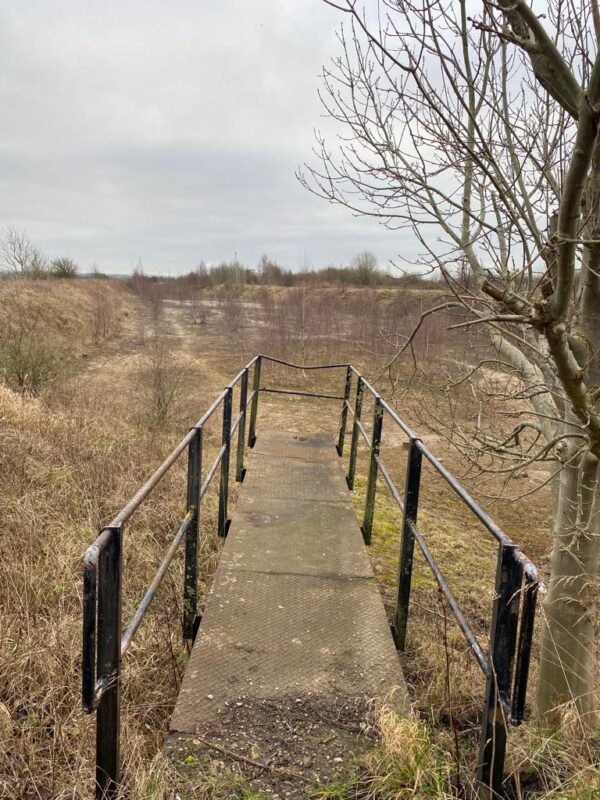Cledford Lane Lagoons wildlife project
After over 100 years of industrial use, we are transforming the Lagoons at Cledford Lane into a wildlife reserve. At British Salt we are always looking for ways to proactively invest back into the local area and the community. This project allows us to do just that, as well as set a route for other businesses with portfolios of brownfield land to follow.

What is the aim of the project?
The scheme will revitalize the former industrial land to create safe public access to large swaths of the site that have, up until now, been inaccessible. The restoration will protect and enhance unique habitats that have already sprung up on the site and will preserve and enhance the rare biodiversity of the land and secure the future of the site for the next 30 years as a haven for wildlife.
What was the site originally used for?
The 70-acre site is made up of a network of 8 settling lagoons that date back to 1896. Originally used by the soda ash and salt purification industries in Middlewich, the land was used for settlement and storage of non-toxic process waste materials.
Tell us more about the build
In a bid to keep things local and in an effort to mitigate disruption for residents and minimise the works’ overall carbon footprint, the project plans, in part, to use excess soil from the construction of the local bypass.
The land will be regenerated with environmental impact front of mind. Circa 200,000m3 of restoration soils generated from developments in the local area, such as the Middlewich Bypass construction, will be used to ‘cap and restore’ the land, ensuring minimal disruption to local communities while reducing the overall carbon footprint of the project. Water collection system improvements are also planned to ensure that rain falling on the site does not come into contact with waste material. This improvement of the water discharge quality will also improve the long-term health of Sanderson’s Brook, with the aim of supporting the biodiversity of this watercourse.
Why are brownfield projects like this one important?
The restoration of the lagoons is a positive step in the preservation of dwindling biodiversity in the UK, which is one of the most nature depleted countries in the world*. The project is not only an opportunity to create a valuable environmental asset of regional importance, but also a chance for the public to access much of the site for the first time in over a century.
How will the local community be able to enjoy this space?
A set of circular footpaths will connect to existing local routes so local residents, walkers and dog walkers will be able to enjoy the restored site safely and without detriment to the valuable flora and fauna.
How does this project relate to legislation and Biodiversity Units?
We’re working with specialist partners Green Earth Developments (“GEDG”) to deliver this project, which is one of the first schemes to use the provisions of the Environment Act 2021 to deliver Biodiversity Units. These units can assist other developments in the area that now have to deliver a 10% net gain in terms of biodiversity as part of their planning permissions. In essence Biodiversity units from this scheme can be used to offset losses on other sites thus ensuring Cheshire East has an overall net gain.
Our Sustainability Manager at British Salt, Jennifer Haynes, said of the project: “Good stewardship of our legacy assets is a real focus for us and the opportunity to make a positive impact is really exciting. We really hope the approach for this project provides a route for others to follow, showing how industrial businesses can use what they already hold to make a significant environmental contribution.
“We plan to set up a local Liaison Committee to help steer the long-term management of the site ensuring that its place as a Middlewich community asset is assured for future generations.”
Sources
*State of Nature – Natural England, Pete Brotherton, 2023